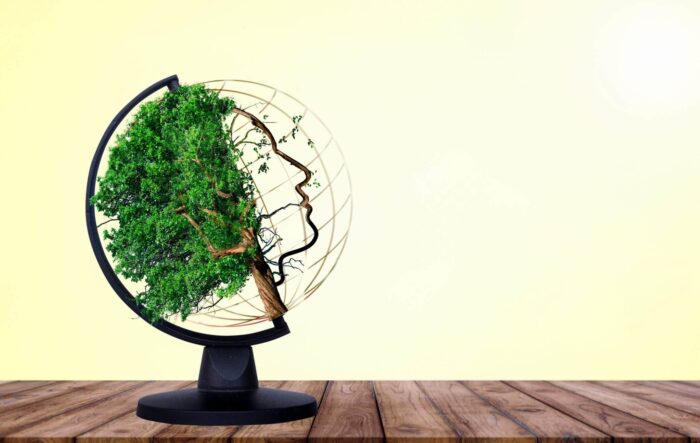
Quick thoughts on User and Customer Experience & Service Design
Nowadays living in the design world can feel like floating in a sea full of titles, terms and definitions, multiplying every other day. At some point, all that bizarre abbreviations may start to sound kind of interchangeable, confusing or even redundant. Especially if you’re new to it.
During the curious journey of creating end-to-end digital systems, there are many roles involved and sometimes they share similar characteristics yet they differ in many ways. This is how and where the concepts of UI, UX, CX, SD are brought to life. Do they have clear borders? Yes and no. Does the title make big difference at the end of the day? Maybe. But there are more important and definitely more interesting things to consider before trying to answer these questions.
Today’s article is basically about UX (User eXperience), CX (Customer eXperience) and SD (Service Design), but first I want to dig into some of the digital design terminology and get the definitions clear as the solution might be hidden in there.
Some essentials to be considered: when speaking of user or customer experience and service design on one hand we have:
- the user or the customer/client;
- in the other we have a product/service (as part of a company which offers and sustains it);
- and in the best case we try connect them through some kind of a process like design or product thinking.
First things first: what is a user, what is a customer, what is a client?
Users perform versatile actions, end-users interact with the product, but could not end up buying it.
The customers are also users, but they’re taking more focused steps and are set on buying something.
To make a point: a user can interact with your product without buying it and a customer can buy it without using it.
What about a customer versus a client? In general, it is accepted that a client is usually someone that uses a service, while the customer buys a physical product.
Personally, I wouldn’t bother to draw a thick line between them, because a service can be defined as a product too. And you can even have a product that provides a service, or a service that provides a product.
Ok, then what’s a product and let’s extend this question to exploring what exactly is called a product design?
Maybe, when some of us hear product design, they picture some fancy sketch of a future sci-fi tool. I used to do that. But a product could be also a brand, a service, a skill, a software, you can shape and sell even an idea.
Of course, a service is a slightly different kind of product and so the software is. But still they share some common features like their ability to be purchased and used while differing in other, like their tangibility.
Products usually have fewer interaction points than the services.
There are many different classifications of products but for the sake of this article we’ll stick only to the product definition from a design perspective and in order to keep it simple we’ll refer to the more general term ”product” no matter what specific kind is it.
It’s not very rare for a customer to be not exactly sure what product they want, but rather what result they expect and what impact they strive to pose.
Now we got these definitions clear, let’s see how they fit in the bigger picture.

We already know that UX is not UI (we do, don’t we), but what about is this CX thing?
“Customer experience” and “service design” are often described as newer concepts, coming after UX, but they are actually based on things that have been around for ages.
UX can be seen as an extend of some industrial design principles applied onto digital products. But users seek not only a valuable product, they also hope to receive a great overalljourney too. And this is where CX and SD step into action. In dummy words, CX is UX on a company level, given a broader area of influence.
CX expands the user interaction beyond dealing with the product itself but covering all the stages across the entire customer journey – finding and assessing info, buying, using, engaging, getting supported, participating, leaving, etc.
It can include a vision of user’s perception of advertising, sales, pricing, delivery, customer service, brand reputation and so on.
To summarize: successful UX helps users find the right info and complete specific tasks easily, while navigating quickly through any digital system, reducing the pain points of this interaction to a minimum. Successful CX helps the customers have a flawless general relationship with the company and its representatives, and to carry a positive vibe about everything associated with this organization.
Both UX and CX try to understand and measure the user’s average feelings and to discover the models by which users interact with a system and thus improve it. But CX also tries to take into account the background and the specifics of the whole process of buying (and then using) a certain product in the broader context of the organization that provides it.
A designer, practicing CX is sometimes called a product designer (but we already know a service can be a product too).
Product design can be seen as problem-solving process, in which we aim to establish a problem-solution model by:
- defining a target audience and revealing а specific issues
- building a strategy for providing a solution
- we should be able to measure the output
- this actions could be iterative
Product thinking as an aspect of design thinking has one important goal: to ensure the business strategies align with the actual customer’s needs and beliefs, resulting in more happy clients.
Put the simple way, product thinking is an instrument for creating the right stuff for the right people, in the most suitable moment. It explores real user needs and minimizes the probability of building something nobody will care for.
Product thinking should lead to a stronger product as it can take the collaboration between product management and experience design to the next level.
Ideally, product design lies in the sweet spot where business and user’s needs overlap.
While UX is more about the product and CX is more about the company that makes the product.Product thinking ensures that the features provided are the same as the features requested by the client.

Service design, the last thing we’ll cover in this article, explores the bigger picture on the digital design scene.
In the best practices UX is included in the CX, while SD incorporates both of them.
The constant need for improvement of the products and the companies made SD come to existence.
SD is an umbrella term used to describe the whole and complete end-to-end process of discovering, creating and delivering any kind of digital experience. It encompasses all the stages, roles, features, skills, methods, principles, tools, approaches, etc. engaged in creating products. That includes shaping all imaginable front-, backstage or side activities that are necessary for this experience to be delivered as intended and expected.
Not every skill of a UX designer can be transferred directly to the service design field. There’s a strong chance of emerging requirements for gaining deeper understanding of the strategy, efficiency, business scope and models, agile development, positive social impact and many other important managerial and marketing attributes, before attempting to enter the SD realm.
UX, CX and SD do share some major common characteristics and sometimes use similar patterns to shape the multi-level digital experience. You can even perceive them like one is extending the other. Yet they differ in some ways, regarding mostly the range, the scope and the focus of involvement in the general agenda. UX, CX, SD may still look to someone like strange subjects, but they are actually all multilateral processes. And every each one of them operates on a different layer of involvement in delivering digital products and to a different extent.
Many of us will agree that the happiness level of the users defines how successful the product is and so how successful the business will be in the long run. Acknowledging this statement and trying to approach it by every means is in the core of all user-centred processes like UX, CX and SD.
What we need to accept is that the borders between these subjects are not always very sharply distinguished. And that’s perfectly OK – as long as they’re serving their purpose well enough.


